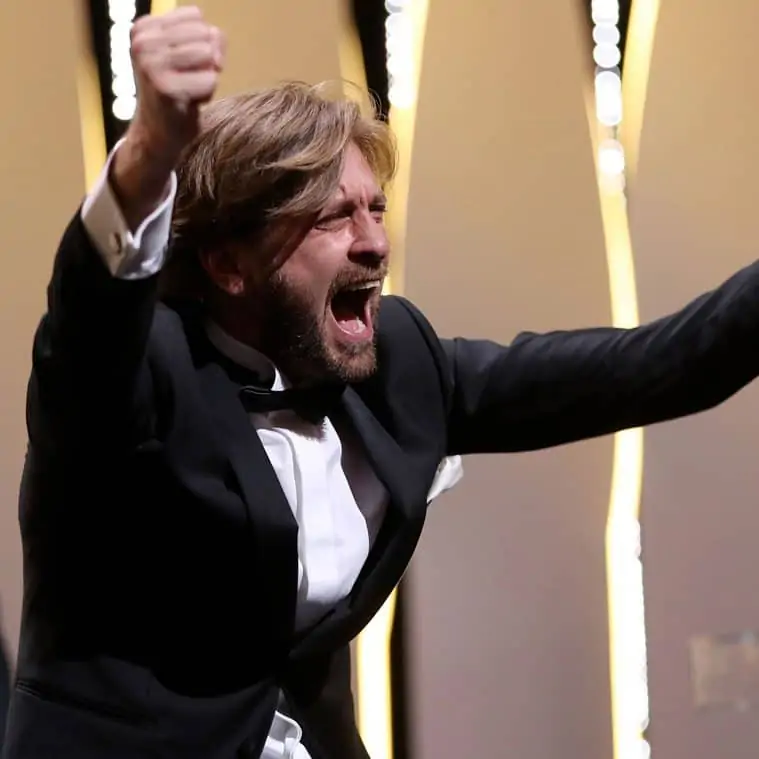
For the 11th year, Angénieux, world-renowned optical manufacturer and flagship of the French industry for almost ninety years, will pay tribute to a great name of photography during an exceptional evening opened by Thierry Frémaux, Delegate General of the Cannes Film Festival and presented by French journalist Charlotte Lipinska.
The Pierre Angénieux ceremony, an official partner of the Cannes Film Festival since 2013, is a unique event during which the experts of the world’s image – without whom cinema would not exist – are highlighted and celebrated. This year, India and its cinema will be in the spotlight.
Santosh Sivan, born on February 8, 1964 in Trivandrum (Kerala, India), is a multi-talented Indian professional famous for his contributions as a cinematographer, film director, producer and actor across Malayalam, Tamil and Hindi cinema. With more than 50 feature films to his credit, Santosh Sivan is an icon of Indian cinema.
A founding member of the Indian Society of Cinematographers (I.S.C) in 1995, he is the most awarded cinematographer in India and the only cinematographer member of the prestigious American Society of Cinematographers (A.S.C).
He succeeds Philippe Rousselot AFC ASC in 2013, Vilmos Zsigmond HSC ASC in 2014, Roger A. Deakins BSC ASC in 2015, Peter Suschitzky ASC in 2016, Christopher Doyle HKSC in 2017, Edward Lachman ASC in 2018, Bruno Delbonnel AFC ASC in 2019, Agnès Godard AFC in 2021, Darius Khondji AFC ASC in 2022 and Barry Ackroyd BSC last year.
Like his predecessors Darius Khondji in 2022 and Barry Ackroyd in 2023, Santosh Sivan will give an in-person Masterclass on Thursday May 23 in the morning, moderated by journalist Jordan Mintzer (The Hollywood Reporter), in addition to the tribute that will be paid to him on Friday May 24.
As a child, Santosh Sivan was attracted to visual arts very soon and his grandmother encouraged him to sketch at an early age. His father – the great photojournalist, portraitist, set photographer, director and cinematographer of documentary films is the well-known Sivasankaran Nai (Sivan). He initiated him when he was very little to the magic of the lenses and cameras. Sivan was still in secondary school when he directed his first film in Super 8.
After his studies at the Loyola College and the Mar Ivanios College Santosh Sivan entered the Film and Television Institute of India located in the city of Pune. He graduated in 1984. He directed several documentaries in 1980 and he worked for the first time as a cinematographer on the film Raakh by Aditya Bhattacharya. Critics immediately praised his work and he became one of the most renowned Indian cinematographers, working on the photography of more than forty films in the 90s, notably for the well-known Indian directors such as Mani Ratnam (Thalapathi, 1991 ; Roja, 1992 ; Iruvar, 1997 and Dil Se, 1998 – which earned him several awards), Priyadarshan (Gardish, 1993 and Kaalapani, 1996), Ajayan (Perumthachan, 1991), Shaji N. Karun (Vanaprastham, 1999) or later on, Gurinder Chadha (Bride & Prejudice, 2004), director who considers him the best Indian cinematographer. Internationally, he made his talents as a director of photography known thanks to the film The Mistress of Spices by Paul Mayeda Berges (UK, 2005).
His directorial debut happened in 1988 with the film The Story of Tiblu, a short black and white documentary for which he received his first National Award (Indian equivalent of the Academy Award) and in 1996, he shot his first fiction film, Halo, winner of the National Award for Best Film. In 1998, The Terrorist, his second film, was crowned with the National Award for Best Tamil Film. Presented at the Cairo International Film festival, it won the Best Director Award and the Golden Pyramid for Best Film. Actor John Malkovich, who was part of the jury, loved the film so much that he decided to release it himself in the United States, instantly highlighting Santosh Sivan’s work both nationally and internationally. In 2001, he directed his third film, Asoka and won several awards for direction of photography.
Considering directing as a natural extension of cinematography, Santosh Sivan decided in 2008 to solely work on his own films, making a few exceptions, notably for Mani Ratnam’s films. In 2017, Lies we tell by Mitu Misra gave him the opportunity to shoot with Gabriel Byrne and Harvey Keitel.
Landscapes are important characters in his films. The state of Kerala where he grew up, with its vibrant colors and diverse cultural fabric, left a lifelong impression on Santosh Sivan and continues to feature in his work till the present day. He prefers to shoot during the golden hour and restricts use of kino fills in his shots. Since his beginnings, the sun, a source of pure light, natural light has been Santosh Sivan’s strength. Thalapathi (1991) is a good example of this : he captured this light by “taming” the climatic conditions, whether it was rain, sun, snow or clouds. He used spontaneity and great technical mastery to translate the essence of change through the seasons and time.
The second area where his work stands out is the close up. He studies the face like it is its own landscape and this is where sketching helps ; “If you start sketching someone, then you look into people with much more detail in them”. He finds those stunning expressions that bring out the right emotional impact. Iruvar (1997) and Dil Se (1998) drew immense praise for their cinematography because they merged Santosh Sivan’s love for landscapes and close-ups into a cohesive whole.
He likes to work with non-professional actors and children (Halo, Tahaan, Malli and Navarasa), because he finds them more credible. In the 90’s, he used the backlight with his actors. Today, his lightning has become subtler, more realistic, especially on his own films, which are high contrast and naturalistic. He strives to ensure that its actors do not wear makeup, or at least as little as possible.
Moreover, Santosh Sivan was awarded the Padma Shri in 2014 by the Government of India. It is a civilian award conferred in recognition of “distinguished contribution in various spheres of activity including the arts, education, industry, literature, science, acting, medicine, social service and public affairs”.
The visual language has always been very interesting because it made you travel, it gave you a license to see the whole world. The journey makes your experience.
In addition to paying tribute to an already established career of a director of photography, Angénieux wants to highlight the promising work of a young talent in cinematography. This is why since 2018 the ANGÉNIEUX SPECIAL ENCOURAGEMENT is given to a young hope in the field of cinematography.
This year, Kadri Koop, a young Estonian cinematographer based in LA, will be given a special endowment allowing her to use the best of Angénieux technology for the images of her next project.
After the Egyptian Haya Khairat last year, the Dutch Evelin Van Rei (2022), the Franco-Mexican Pamela Albarrán (2021), the Indian Modhura Palit (2019) and the Chinese Cécile Zhang (2018), Kadri Koop, will be able to benefit from Angénieux’s support throughout the year, just as her predecessors.
A graduate of Stanford University (California) in documentary cinema and the American Film Institute in cinematography, Kadri Koop divides her time between Los Angeles, New York and Europe.
She enjoys working at the intersection between documentary and fiction, often merging the two sensibilities in her approach to visual storytelling. Her professional experiences already brought her from Tallinn, her hometown, to Beijing, London and Havana.




















